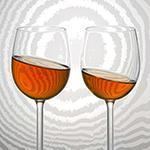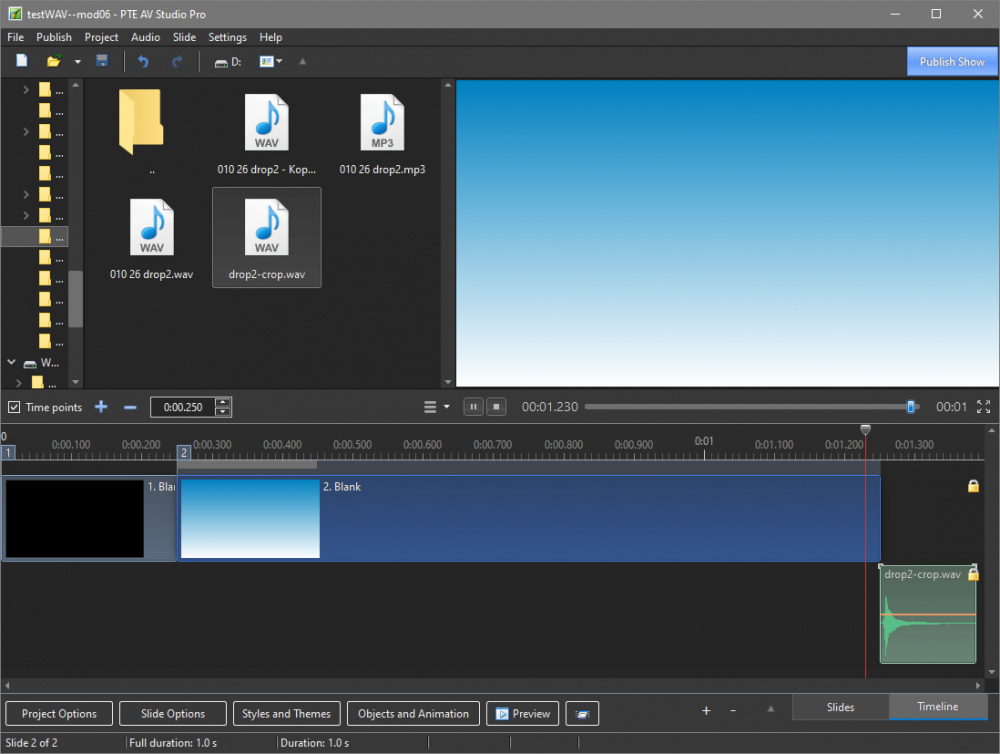-
Posts
1,439 -
Joined
-
Last visited
-
Days Won
15
Everything posted by jt49
-
Did you try a short USB extension cable?
-
Text objects are not well suited for having child objects. The position of a child object (with fixed coordinates) depends on the aspect ratio of its parent. The aspect ratio of a text object typically changes if you change the text, or the font, or the line spacing. I think that this is the reason why PTE does not allow child objects of text objects. My recommendation: Build up a hierarchy of transparent frames and add texts object at appropriate positions.
-
The frame "Second part" has a size of 100%, while the size of the frame "Border" is 103%. This is the reason why the two axes do not coincide.
-
I have extracted part of your construction. Your problem is that the image part and the corresponding border part do not turn around the same Y-axis (see attached project). vbl2007-project-modified.zip
-
I would like to see a PTE project (1 slide, 1 Image) where this happens.
-
As I told you before: Use a mask container instead of the frame (see also Igor's post from above).
-
Styles are a very good concept, but the way to apply them is (to some extent) misleading. As we see here, it happens quite often that users build up their slides (including several animated images), and then they try to apply a particular style to these slides, wondering that the effect does not meet their expectations. What we have to keep in mind: A style is a kind of a generic slide (or a series of slides), and it requires just as input a set of images (or videos), but not a set of (preconstructed) slides. IMO the user interface for styles should take this into account. I would not regard the slide list as the appropriate input medium for styles. It works, but ....
-
Regarding Blur, it seems that presently we have "nested blur" automatically, and it would fine if we could switch it on or off. In the future version, there might be 3 buttons (or tick boxes) for switching on/off the common effects for opacity, blur, and color correction.
-
Question on the alpha channels: Will there be a common alpha channel for all child objects (as in the case when working with a mask container), or will there be a single alpha channel for each child object (would be equivalent to changing the opacity of each child object separately)?
-
I know this quite well. But sometime I prefer to start the local preview without showing the transition. Normally I do not use the mouse for the pause. But presently I am working on a live presentation. The pity is that PTE does not offer speaker support as m.objects does. So, for adding asynchronous audio, I have to make use of an external audio player that is controlled from PTE using batch scripts; and for certain reasons these scripts sometimes must do automatic mouse clicks into PTE's screen window. The whole thing would be much easier for me if PTE would offer the coexistence of synchronous and asynchronous audio in an appropriate way.
-
I think that it is a leftover from the former "buy page", when there was only one installation file around (for Windows). The page ought to be updated.
-
Long time ago, there was a discussion, if the "Toast" (Preview from current position) should be a standard button or not. It isn't, but you can activate it in the toolbar settings. It has been said that we should rather use the Arrow Button at the mini player. Now, does the Arrow Button really replace the Toast? No, it doesn't. In the standard project settings, a left mouse click does not pause the show when it has been started with the Preview or the Toast; but the show pauses on mouse click if it has been started with the Arrow Button.
-
What you buy is a license key, which you obtain via e-mail. See: https://www.wnsoft.com/en/pte-av-studio/buy/ Indeed, the description on this page could be better
-
You do not buy a version for a particular operating system, you pay for a license to use PTE Pro. You can use the software on 2 computers, and you may have one instance of PTE on a Windows machine, and another one on a Mac.
-
You can change all objects of a particular slide inside its O&A window
-
A rather simple style for arbitrary images and aspect ratios. Unrolling_image_with_blur.ptestyle
-

Co-Existance of synchronous and asynchronous audio clips
jt49 replied to jt49's topic in Suggestions for Next Versions
The features that I am asking for is part of so-called "Speaker Support", as it is called in the professional German/Austrian AV products. Think of a live presentation. In this case you will have parts which run automatically, and which need normal synchronous audio. But there will also be parts where you speak live to your slides. In this situation you cannot work with automatic slide progression; you must work with manual control (on one day a particular slide will stay on screen for 25 seconds, on another day it might be 45 seconds, depending on the situation and the audience). In such a part of the presentation your background audio has to be asynchronous. Furthermore you need well-defined time points for soft changes of audio clips (synchronous and asynchronous). At present time, I use PTE for playing the synchronous audio parts, and I use batch scripts for controlling foobar2000 to run asynchronous audio (in combination with NirCmd). This is the first time that I have to admit that my German AV friends are better off using their classical AV tools. -
Presently, I am working on manually controlled live presentations. Here I see a deficiency in the audio part of PTE. My suggestion: Introduce the co-existence of synchronous and asynchronous audio clips. For each clip the user should have the choice to make it synchronous or asynchronous. In the synchronous case, everything should be as it is at present time. In the asynchronous case, the clip should start (fade in) when the cursor reaches its start point on the timeline, and it should stop (fade out) when the cursor passes its indicated endpoint. Of course, the asynchronous clip should go on running in cases when the show stops between these two points (e.g. when waiting for a key press to show the next slide). If needed, the asynchronous clip should run in a loop.
-
In the Online Help on Slide Options we read: Run External Application - Run an external slide show or application automatically. After the external application has terminated, the show continues with the next slide. This is not quite correct. The running show only stops if the called application opens a window that becomes the active one, and if you have chosen "Pause when slideshow window becomes inactive". In all other cases, PTE does not stop. If you make the slideshow window active again, the show goes on even if the external application has not terminated.
-
Is there any new information on this subject?
-
Remark: "PteViewerX.exe" and the launchers in "Save Executables" are identical.
-
My observations: In the attached project we should not hear the sound, as it's position is behind the last slide. In the Preview (not in all but in most cases) I can hear the sound. In the Mini Player (not in all but in most cases) the cursor stops not reaching the end point (see image). Nevertheless I can hear the sound. This happens in V9, V10.0.14, and V10.5.1 testWAV--mod06.zip
-
There are situations where I do not see antialiasing. Antialiasing.zip


